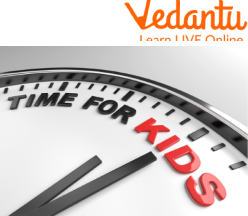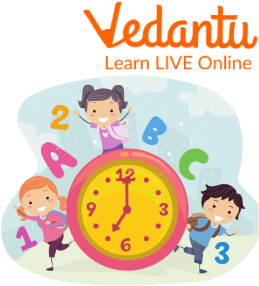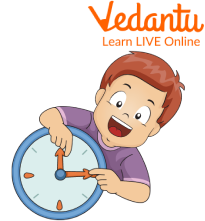




Time: One of the Most Essential Man-Made Inventions
Have you ever wondered how people from all over the world are collectively living and functioning so systematically? How do they keep track of everything they need to do and for how long? Who is doing all this decision-making? Is it a man-made creation or a natural one? If yes, then this is the right Time for you to find out!
In this topic, you will learn about the concept of time, units of time, time zones, and the historic perspective of time.
By the end of the module, you will be able to understand the importance and application of time in everyday life and its origin.
Let’s not waste any more of your time and quickly jump onto the first topic.

Time for kids
A Brief Introduction - Time for Children
Time is a very crucial asset that helps us to measure or estimate the duration of completing a certain task or gives us a tentative idea of how long it will take to finish it. Time is also used to narrate how long ago events happened in the past. Similarly, with the help of time, we can also determine the possibility of events happening in the near future.
Time ensures the functioning and division of things much smoother and easier. It is single-handedly governing and controlling the entire world at once in different parts of the world.

An Animated Picture from 'What is Time for Kids'
Units of Time for Children and Time Zones
Why is it important to have different units of time? It is extremely important to have units of time as it would make observations and measurements more accurate and reliable. The division of time is into days, hours, minutes, and seconds. In one full day and night, there are 24 hours.
The division of hours is done in minutes and seconds. In an hour, there are 60 mins and in a minute, there are 60 seconds. Long periods of time are measured in years. There are 365 days in a year and 366 days in a leap year. A year is divided into 12 months. There are 28 to 31 days in a month.

Clock
A specific fragment of Earth encounters sunlight and the remaining part experiences nighttime. Globe is divided into 24 segments known as time zones. Time zones are split up by imaginary lines. These lines join the 2 poles together, the north and the south pole. The primary time zone commences at 0° longitude.
Historical Aspect - Time
In older times, people used to predict and measure time just by looking at the sky. They observed The Sun (sunrise, sunset), The Moon, stars, and planets interchange and switch their position. In addition to that, they also observed that days get shorter and nights longer, and later on experience various seasons.
Summary
We learned about a very important concept - Time. Time is a unit of measurement which is extremely substantial in today’s world. Time is divided into various units - days, months, mins, and hours. Ancient people invented clocks and tried to estimate time by looking at the sky before the invention of the clock. In ancient times Egyptians created calendars for tracking the days as they were passing by. They also invented a type of clock known as the sundial. The clock then later on evolved and developed into a modified and qualified instrument.
FAQs on What is Time: Teaching Kids About Time Concepts
1. What is the full form and meaning of GMT?
The full form of GMT is Greenwich Mean Time.GMT time can be seen on the Shepherd Gate Clock at the Royal Observatory in Greenwich, London.
2. What do you mean by a sundial?
The first sort of timekeeping device is the sundial, which determines the time of day by observing the location of an object's shadow cast by the sun. The sun moves across the sky throughout the course of the day, causing the shadow of the object to shift and acting as a timekeeper.
3. What are longitude and latitude?
The angle created by a line connecting the earth's centre to the equator at the point on the equator that is closest to the point of interest and another line connecting the earth's centre to the parallel that passes through the point of interest is known as the latitude.
The longitude is the angle produced by a line passing through the earth's centre, the equator, a second line passing through the earth's centre, the equator, and the meridian passing through the point of interest, where the longitude equals 0.









